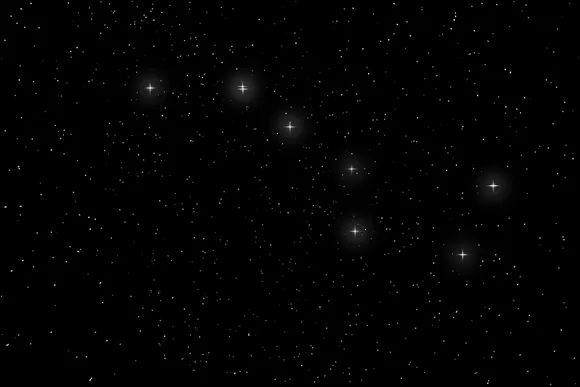![]()
Part 1
Getting Started with Astronomy
IN THIS PART …
Discover the basic elements of astronomy, check out a list of constellations, and get a crash course on gravity.
Find out about the resources available to help you check out the night sky, including organizations, facilities, and equipment.
Get an introduction to astronomical and artificial phenomena that sweep across the night sky, such as meteors, comets, and artificial satellites.
![]()
Chapter 1
Seeing the Light: The Art and Science of Astronomy
IN THIS CHAPTER
Understanding the observational nature of astronomy Focusing on astronomy’s language of light Recognizing the movements of objects in space Step outside on a clear night and look at the sky. If you’re a city dweller or live in a cramped suburb, you see dozens, maybe hundreds, of twinkling stars. Depending on the time of the month, you may also see a full Moon and up to five of the eight planets that revolve around the Sun.
A shooting star or “meteor” may appear overhead. What you actually see is the flash of light from a tiny piece of space dust streaking through the upper atmosphere.
Another pinpoint of light moves slowly and steadily across the sky. Is it a space satellite, such as the Hubble Space Telescope, the International Space Station, or just a high-altitude airliner? If you have a pair of binoculars, you may be able to see the difference. Most airliners have running lights, and their shapes may be perceptible.
If you live in the country — on the seashore away from resorts and developments, on the plains, or in the mountains far from any floodlit ski slope — you can see thousands of stars. The Milky Way appears as a beautiful pearly swath across the heavens. What you’re seeing is the cumulative glow from millions of faint stars, individually indistinguishable with the naked eye. At a great observation place, such as Cerro Tololo in the Chilean Andes, you can see even more stars. They hang like brilliant lamps in a coal black sky, often not even twinkling, like in van Gogh’s Starry Night painting.
When you look at the sky, you practice astronomy — you observe the universe that surrounds you and try to make sense of what you see. For thousands of years, everything people knew about the heavens they deduced by simply observing the sky. Almost everything that astronomy deals with
- Is seen from a distance
- Is discovered by studying the light that comes to you from objects in space
- Moves through space under the influence of gravity
This chapter introduces you to these concepts (and more).
Astronomy: The Science of Observation
Astronomy is the study of the sky, the science of cosmic objects and celestial happenings, and the investigation of the nature of the universe you live in. Professional astronomers carry out the business of astronomy by observing with telescopes that capture visible light from the stars or by tuning in to radio waves that come from space. They use backyard telescopes, huge observatory instruments, and satellites that orbit Earth collecting forms of light (such as ultraviolet radiation) that the atmosphere blocks from reaching the ground. They send up telescopes in sounding rockets (equipped with instruments for making high-altitude scientific observations) and on unmanned balloons. And they send some instruments into the solar system aboard deep-space probes.
Professional astronomers study the Sun and the solar system, the Milky Way, and the universe beyond. They teach in universities, design satellites in government labs, and operate planetariums. They also write books (like me, your loyal For Dummies hero). Most have completed years of schooling to hold PhDs. Many of them study complex physics or work with automated, robotic telescopes that reach far beyond the night sky recognizable to our eyes. They may never have studied the constellations (groups of stars, such as Ursa Major, the Great Bear, named by ancient stargazers) that amateur or hobbyist astronomers first explore.
You may already be familiar with the Big Dipper, an asterism in Ursa Major. An asterism is a named star pattern that’s not identical to one of the 88 recognized constellations. An asterism may be wholly within a single constellation or may include stars from more than one constellation. For example, the four corners of the Great Square of Pegasus, a large asterism, are marked by three stars of the Pegasus constellation and a fourth from Andromeda. Figure 1-1 shows the Big Dipper in the night sky. (In the United Kingdom, some people call the Big Dipper the Plough.)
In addition to the roughly 30,000 professional astronomers worldwide, several hundred thousand amateur astronomers enjoy watching the skies. Amateur astronomers usually know the constellations and use them as guideposts when exploring the sky by eye, with binoculars, and with telescopes. Many amateurs also make useful scientific contributions. They monitor the changing brightness of variable stars; discover asteroids, comets, and exploding stars; and crisscross Earth to catch the shadows cast as asteroids pass in front of bright stars (thereby helping astronomers map the asteroids’ shapes). They even join in professional research efforts with their home computers and smartphones through Citizen Science projects, which I describe in Chapter 2 and elsewhere throughout the boo...





